Niigata is a prefecture located in the Chubu region of Japan. It is a great place to observe birds, with a wide range of species to be found throughout the year.
In the spring, many migratory birds make their way to Niigata to breed and feed, making it a great destination for birders and photographers alike.
The prefecture is home to a variety of habitats, from wetlands to forests to the sea, providing an ideal environment for a wide variety of birds.
Some of the common species that can be seen in Niigata include the Azure-winged Magpie, the Japanese Green Pheasant, the Crested Kingfisher, and many more. Whether you’re a novice birder or a seasoned expert, Niigata is a great place to enjoy bird-watching.
1. Japanese Green Pheasant
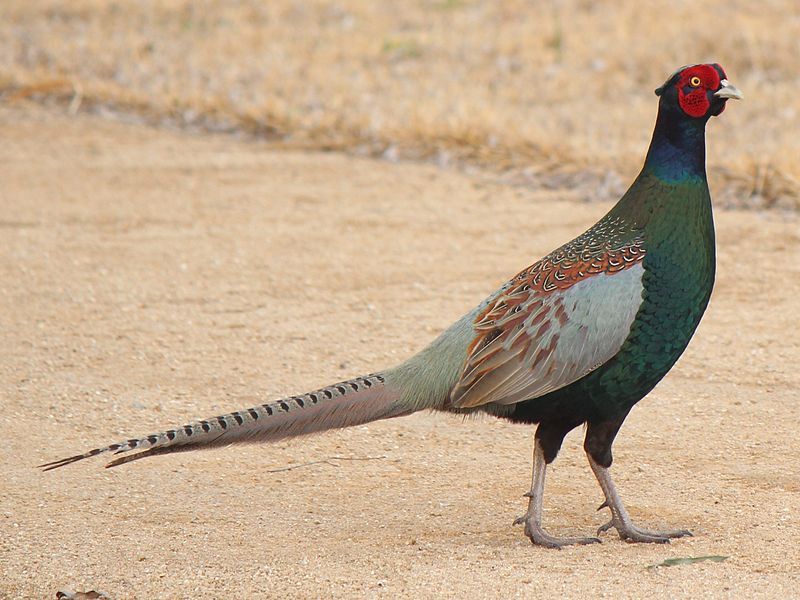
The green pheasant, also known as the Japanese green pheasant, is a unique bird found only in Japan. It is an omnivorous species, meaning it feeds on both plants and animals. Taxonomically, it is considered to be a subspecies of the common pheasant, Phasianus colchicus.
Its status as the national bird of Japan further highlights its significance to the country, making it an important symbol of its culture and identity. The green pheasant is an iconic species in Japan and has a distinct physical appearance that sets it apart from the common pheasant.
It has a relatively long tail, and its feathers are a light olive green color, with a patch of dark green on its wings. The adult male has a lighter brown head, a white collar, and a pinkish-red face.
It is a medium-sized bird, measuring around 48–57 cm (19–22 in) in length. The green pheasant is a shy species and is mostly active during the day. It spends its time foraging for food in open areas such as grassland and woodland.
Its diet consists of fruits, seeds, insects, and small animals.
It typically prefers to nest in dense vegetation, building its nest on the ground. In Japan, the green pheasant has long been an important part of the national culture and is heavily featured in literature, art, and folklore.
Its status as the national bird of Japan further highlights its importance to the country, and it is a symbol of its culture and identity. As such, the species is highly valued, and conservation efforts have been put in place in order to ensure its long-term survival.
| Kingdom | Animalia |
| Phylum | Chordata |
| Class | Aves |
| Order | Galliformes |
| Family | Phasianidae |
| Genus | Phasianus |
| Species | P. versicolor |
2. Tufted Duck
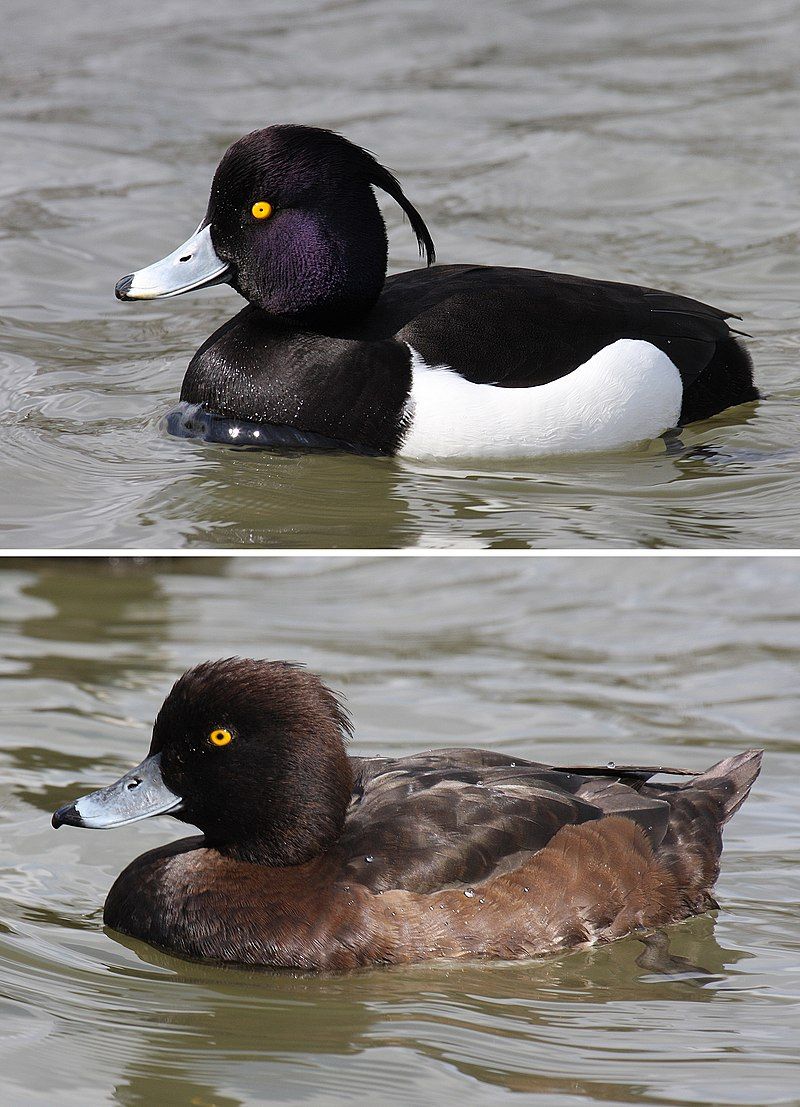
The tufted duck, also known as the tufted pochard, is a small diving duck with a large population of almost one million birds. It is found mainly in northern Eurasia.
The scientific name of this species is derived from the Ancient Greek aithuia, which was a seabird mentioned in the works of Hesychius and Aristotle.
The Latin words fuligo and gula are also used in the scientific name, and they mean “soot” and “throat” respectively. The tufted duck has a black head, white neck, and brown body. Its most distinctive physical feature is a dark tuft of feathers around its head.
The tufted duck prefers to live in shallow freshwater areas, such as lakes, ponds, marshes, and other wetlands. It feeds on aquatic plants, insect larvae, and mollusks. Tufted ducks nest in large colonies and can be seen in large numbers during the breeding season.
They migrate southwards in winter and can be found in parts of Europe, North Africa, and the Middle East. The tufted duck is an important species in the ecosystem, as it helps to keep the aquatic environment clean by eating aquatic plants and organisms.
This species is listed as a species of least concern by the IUCN, as its population is stable.
| Kingdom | Animalia |
| Phylum | Chordata |
| Class | Aves |
| Order | Anseriformes |
| Family | Anatidae |
| Genus | Aythya |
| Species | A. fuligula |
3. Whooper Swan
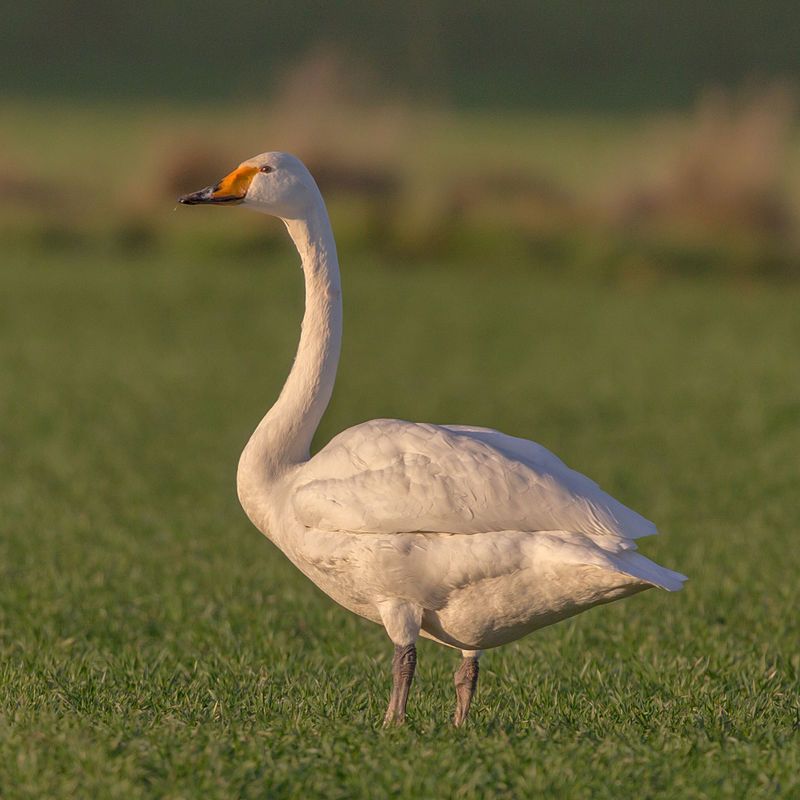
The whooper swan is a species of large waterbird found in the northern hemisphere. It is the Eurasian equivalent of the North American trumpeter swan and is the type species for the genus Cygnus. It is also known as the common swan, and is found in many parts of Europe and Asia.
It is one of the largest species of swan, measuring up to 140 centimetres in length and having a wingspan of up to 2.3 metres.Whooper swans have mainly white plumage, with black and yellow bills, and black legs and feet.
They have a distinctive call, which is a loud and melodious trumpeting sound. The whooper swan is a social bird that forms large flocks in the winter. They feed on aquatic vegetation, insects, molluscs and small fish.
They nest on the ground, near the water, and usually lay three to eight eggs. The whooper swan has been a source of inspiration for many cultures and is featured in many myths and legends.
It is also a popular bird for hunting, with its meat being considered a delicacy in some countries. Despite this, the species is still common and widespread and is listed as least concern by the International Union for Conservation of Nature.
| Kingdom | Animalia |
| Phylum | Chordata |
| Class | Aves |
| Order | Anseriformes |
| Family | Anatidae |
| Genus | Cygnus |
| Species | C. cygnus |
4. Falcated Duck
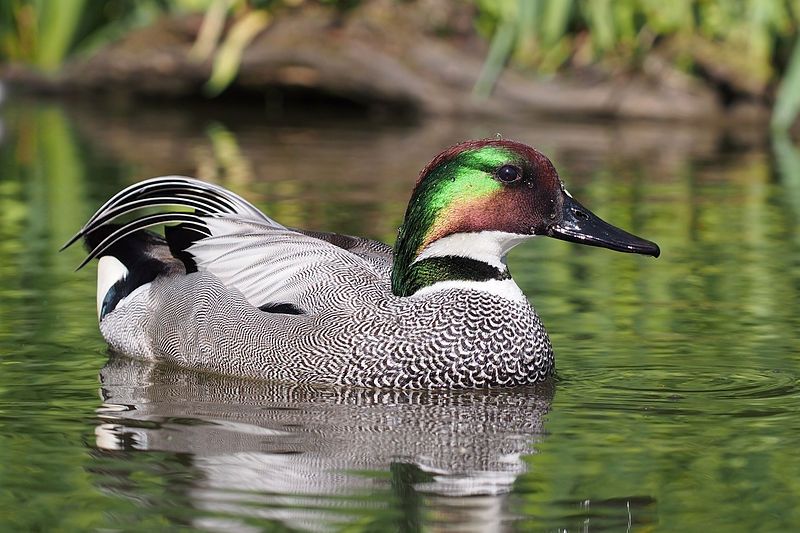
The falcated duck, also known as the falcated teal, is a species of dabbling duck that is found in the east Palearctic region. It is similar in size to a gadwall, which is a type of dabbling duck that is found in the Northern Hemisphere.
The falcated duck is also closely related to the Eurasian wigeon and the mallard. It has a unique shape, with a curled tail, and distinctive white-barred wings. Its head is grey-brown in color, and it has a white eye-ring.
The body is mainly brownish-grey in color, with a pale head and neck. The bill is yellow-orange, and the legs and feet are orange-yellow. The falcated duck is a secretive bird, often found in wetlands and marshes, and it feeds mainly on aquatic vegetation.
It also eats insects, mollusks, and small fish. During the breeding season, males and females form pairs and can be seen in pairs during courtship displays.
| Kingdom | Animalia |
| Phylum | Chordata |
| Class | Aves |
| Order | Anseriformes |
| Family | Anatidae |
| Genus | Mareca |
| Species | M. falcata |
5. Tundra Swan
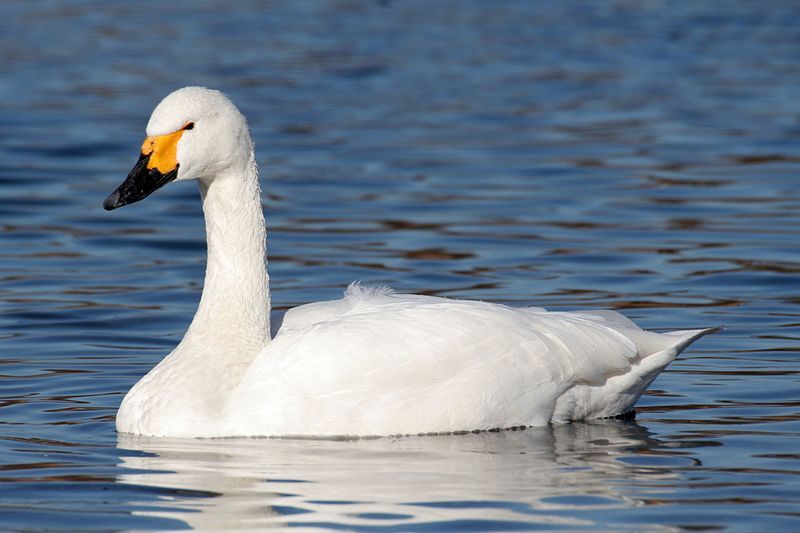
The tundra swan is a species of swan that is found across the Holarctic, a region of the world that encompasses the Palaearctic and Nearctic ecozones.
This species is generally regarded as a single species, but there are two taxa within it that are sometimes classified as separate species. These two species are known as Bewick’s swan and the whistling swan.
Bewick’s swan is found in the Palaearctic ecozone, while the whistling swan is found in the Nearctic ecozone. The two taxa are similar in appearance, but there are a few physical differences that can help to differentiate them.
Bewick’s swan is the smaller of the two, with a shorter bill and thinner neck, while the whistling swan is the larger of the two, with a longer bill and thicker neck. They also have different calls and vocalizations.
Bewick’s swan has a high-pitched, squeaking call, while the whistling swan has a distinct, low-pitched, musical whistle. The two taxa of the tundra swan are adapted to different environments.
Bewick’s swan is found in more temperate climates, while the whistling swan is more adapted to colder regions. This is likely due to the cold-adapted features of the whistling swan, such as its thicker neck and longer bill.
Overall, the tundra swan is an interesting species of swan because of its two distinct taxa. While these two taxa are usually regarded as conspecific, or belonging to the same species, there are times when they are classified as separate species.
The physical differences and the adaptations of the two taxa to different habitats make them unique and interesting to observe.
| Kingdom | Animalia |
| Phylum | Chordata |
| Class | Aves |
| Order | Anseriformes |
| Family | Anatidae |
| Genus | Cygnus |
| Species | C. columbianus |
6. Eastern Spot-Billed Duck
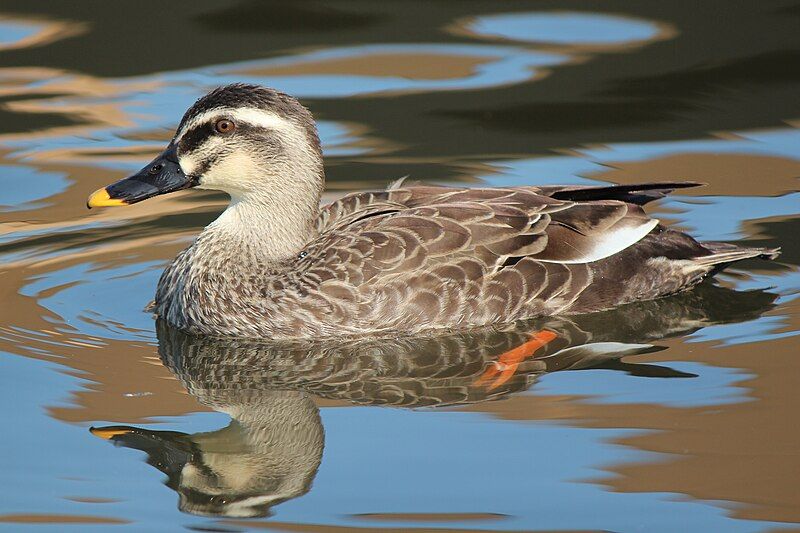
The eastern spot-billed duck is a species of dabbling duck that is native to East and Southeast Asia. It was previously classified as a subspecies of the Indian spot-billed duck, and both were referred to as the spot-billed duck.
The species is named after the yellow spot that can be found on the bill of the duck. The spot is believed to be a distinguishing feature of the species, which can be seen from long distances.
The eastern spot-billed duck is slightly larger than the Indian spot-billed duck and has darker plumage with a more distinct white forehead. It prefers to inhabit shallow wetlands, swamps, and paddy fields, where it feeds mainly on aquatic plants, insects, and small animals.
The eastern spot-billed duck can be found in countries such as India, China, Bangladesh, Myanmar, and Vietnam, as well as in parts of Thailand and Cambodia. It is listed as Least Concern on the IUCN Red List and is considered to be a common species in most areas.
| Kingdom | Animalia |
| Phylum | Chordata |
| Class | Aves |
| Order | Anseriformes |
| Family | Anatidae |
| Genus | Anas |
| Species | A. zonorhyncha |
7. Smew
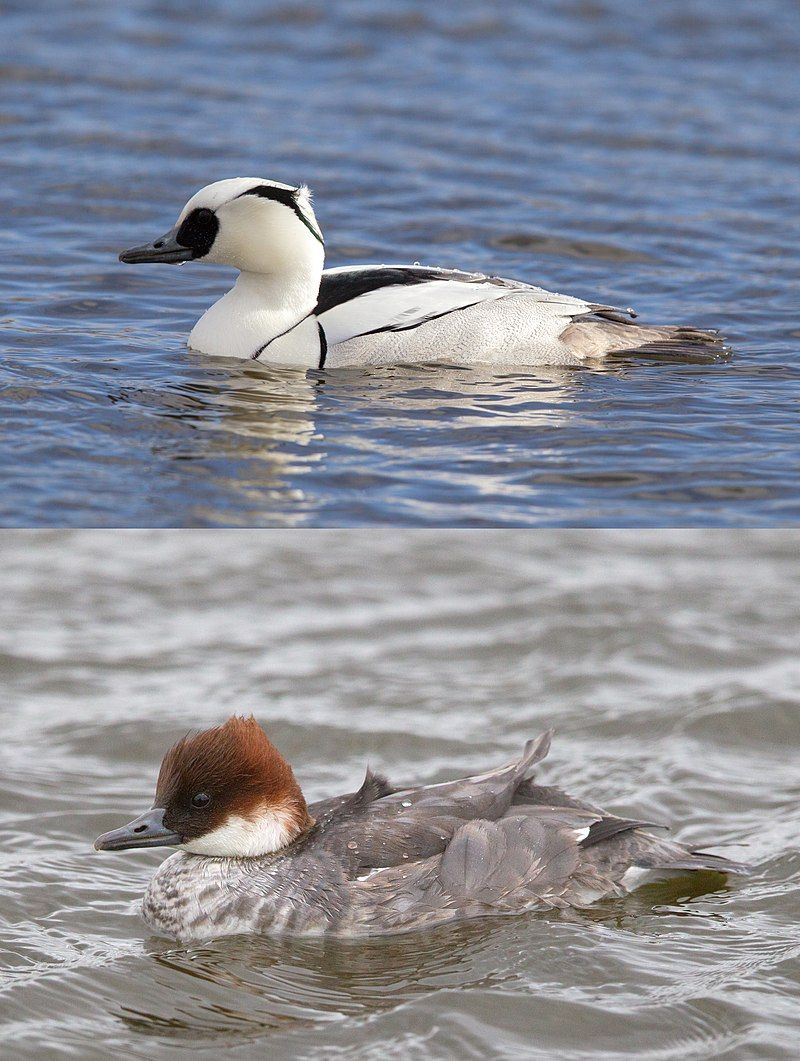
The smew is a species of duck and is the only living member of the genus Mergellus. This genus of ducks is closely related to the genus Mergus, although some believe it is even closer to the goldeneyes.
The name Mergellus comes from the Latin word mergus, which means “diving duck”, while albellus, also from Latin, means “white”. This specific genus of ducks is known for its white feathers and for its skill at diving underwater.
The smew is a midsized duck, typically ranging from 16-17 inches in length. The male smew has a black-and-white back and head, a chestnut-colored belly, and a white stripe below the eye. The female smew is grey in color and is slightly smaller than the male.
The smew can be found in parts of Europe, Asia, and North America. It prefers shallow freshwater habitats such as lakes, ponds, marshes, and rivers. The smew feeds mainly on small fish, aquatic insect larvae, and mollusks. It can be seen swimming underwater in search of food.
The smew is a unique species of duck due to its size and distinctive coloration. Its scientific name, Mergellus, is derived from its close relationship to the goldeneyes and Mergus ducks. It is a beautiful and interesting species of duck that is worth admiring and protecting.
| Kingdom | Animalia |
| Phylum | Chordata |
| Class | Aves |
| Order | Anseriformes |
| Family | Anatidae |
| Genus | Mergellus |
| Species | M. albellus |
8. Greater White-Fronted Goose
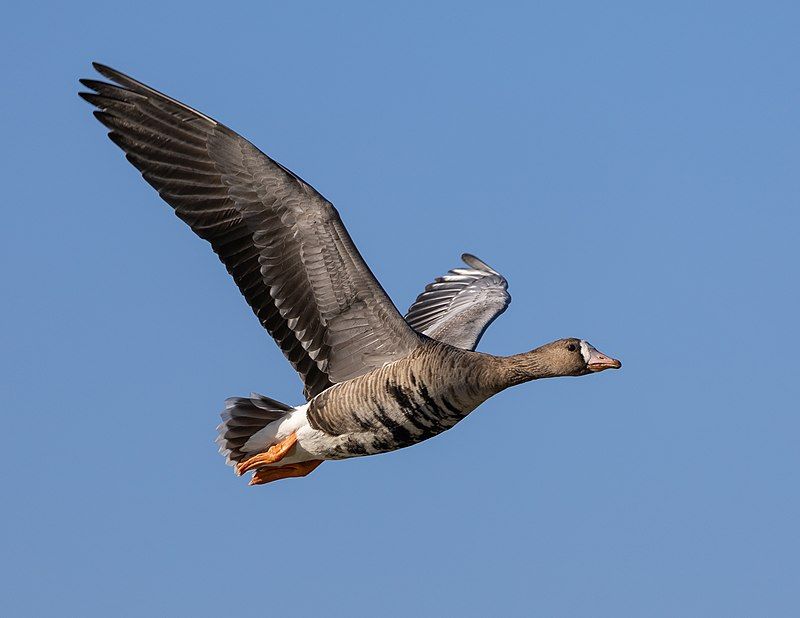
The greater white-fronted goose is a species of goose that is closely related to the lesser white-fronted goose. This species of goose is named for the patch of white feathers at the base of its bill, which is the fundamental basis of its Latin name albifrons.
The Latin words albus and frons both mean “white” and “forehead” respectively and when combined they create the word albifrons which translates to “white forehead”. This accurately describes the white feathers that border the base of the bill of the greater white-fronted goose.
This species of goose is found in large numbers in the northern hemisphere, particularly in wetland habitats such as marshes, ponds, and lakes.
It is also known to migrate long distances in order to find a suitable habitat for its preferred food sources, which range from grasses, berries, and insects.
The greater white-fronted goose has also been a subject of conservation efforts due to its declining population numbers in recent years.
| Kingdom | Animalia |
| Phylum | Chordata |
| Class | Aves |
| Order | Anseriformes |
| Family | Anatidae |
| Genus | Anser |
| Species | A. albifrons |
9. Common Pochard
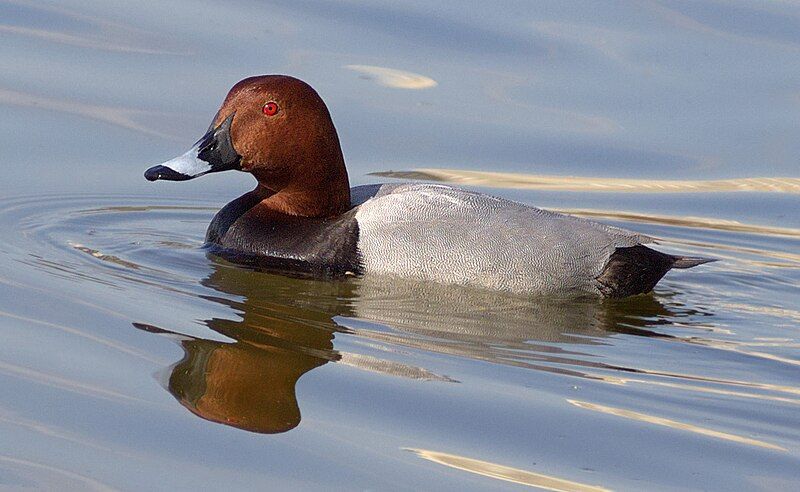
The common pochard is a species of diving ducks that is found in many parts of the world.
Its scientific name is derived from two sources: the Greek word “aithuia” and the Latin word “ferina.” In Greek mythology, the word “aithuia” was used to refer to an unidentified seabird, which was mentioned by various authors such as Hesychius and Aristotle.
Latin, on the other hand, uses the word “ferina,” which is derived from the term “ferus,” meaning “wild.” This is a reflection of the common pochard’s wild nature, making it an ideal game bird for hunters.
The combination of these two terms creates the scientific name of the common pochard, which is fitting given its wild nature and its status as a popular game bird.
| Kingdom | Animalia |
| Phylum | Chordata |
| Class | Aves |
| Order | Anseriformes |
| Family | Anatidae |
| Genus | Aythya |
| Species | A. ferina |
10. Northern Pintail
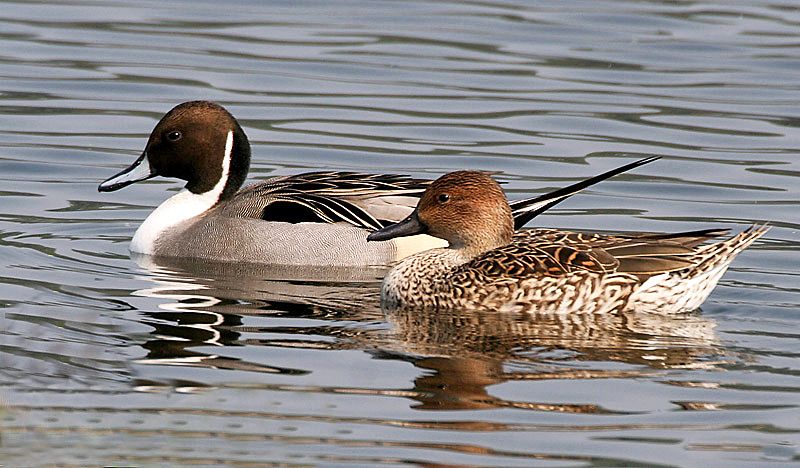
The pintail or northern pintail is a duck species that is widely distributed across the Palearctic and North America. It breeds in northern areas of Europe, and is a migratory species, meaning it travels long distances in search of food and suitable habitats.
During the winter months, the pintail will migrate further south, to areas closer to the equator. This species is well adapted to its varied habitats and can be found in wetlands, estuaries, lagoons, marshes, and even in fields and grasslands.
It feeds on a wide range of aquatic vegetation and invertebrates, such as snails, mollusks, and aquatic insects. The pintail is an important species for the health of wetland ecosystems, as its presence helps to maintain balance in the food web.
| Kingdom | Animalia |
| Phylum | Chordata |
| Class | Aves |
| Order | Anseriformes |
| Family | Anatidae |
| Genus | Anas |
| Species | A. acuta |
11. Common Goldeneye
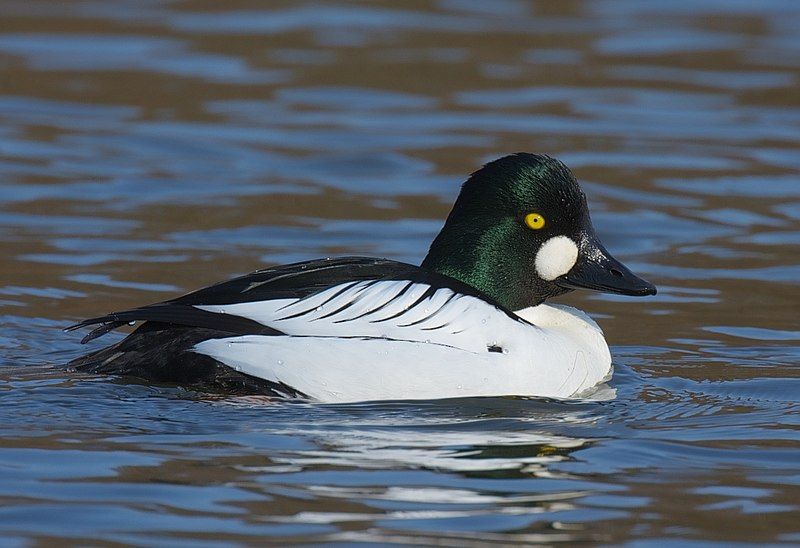
The common goldeneye is a medium-sized sea duck belonging to the genus Bucephala, which also includes the closely related Barrow’s goldeneye. Its name is derived from the Ancient Greek boukephalos, referring to the distinctive head shape of the bufflehead.
The common goldeneye is characterized by its black and white plumage, its yellow eyes, and its stout body shape. The males are slightly larger than the females, and have a bright yellow bill and white patch on the head.
They are mostly found near lakes, rivers, and wetlands, and can dive up to thirty feet underwater to feed on small fish, mollusks, and crustaceans. The common goldeneye is an important species for hunters and can be found in Europe, North America, and parts of Asia.
It is considered an important species for conservation, and populations have remained stable in recent years.
| Kingdom | Animalia |
| Phylum | Chordata |
| Class | Aves |
| Order | Anseriformes |
| Family | Anatidae |
| Genus | Bucephala |
| Species | B. clangula |
12. Goosander
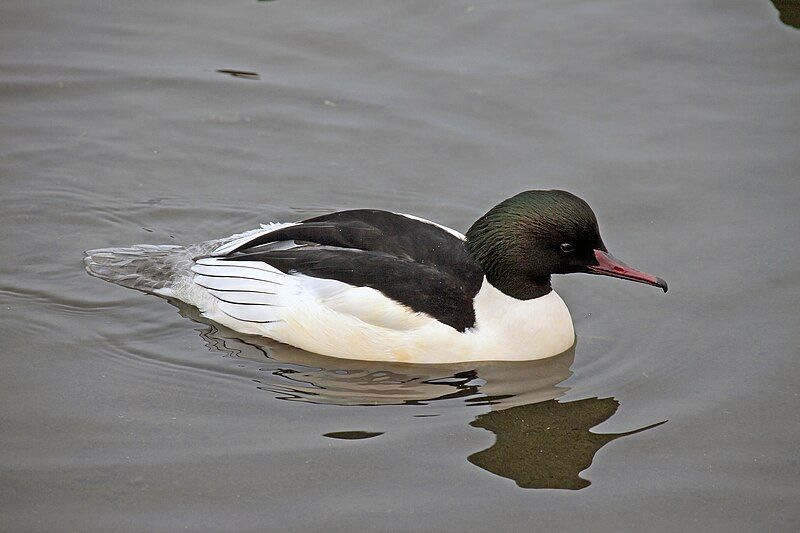
The Common Merganser, also known as the Goosander, is a species of large seaduck that inhabits rivers and lakes in a variety of forested areas around the world. It is found in Europe, Asia, and North America.
This species of duck is mainly predatory, preying on fish as its main source of food. Common Mergansers prefer to nest in tree holes, typically in deciduous trees such as oaks and beeches, or in conifers like pines and cedars.
They usually select trees near water bodies, giving them easy access to food.
The nest is made up of down and feathers and provides a safe and comfortable place for the female to lay her eggs. The Common Merganser is a remarkable species, with its vibrant plumage and impressive size.
It is a beautiful sight to behold, and an important part of many ecosystems.
Unfortunately, due to human activities such as habitat destruction and water pollution, the population of this species is declining, and conservation efforts are necessary if we are to ensure its survival.
| Kingdom | Animalia |
| Phylum | Chordata |
| Class | Aves |
| Order | Anseriformes |
| Family | Anatidae |
| Genus | Mergus |
| Species | M. merganser |
13. Bean Goose
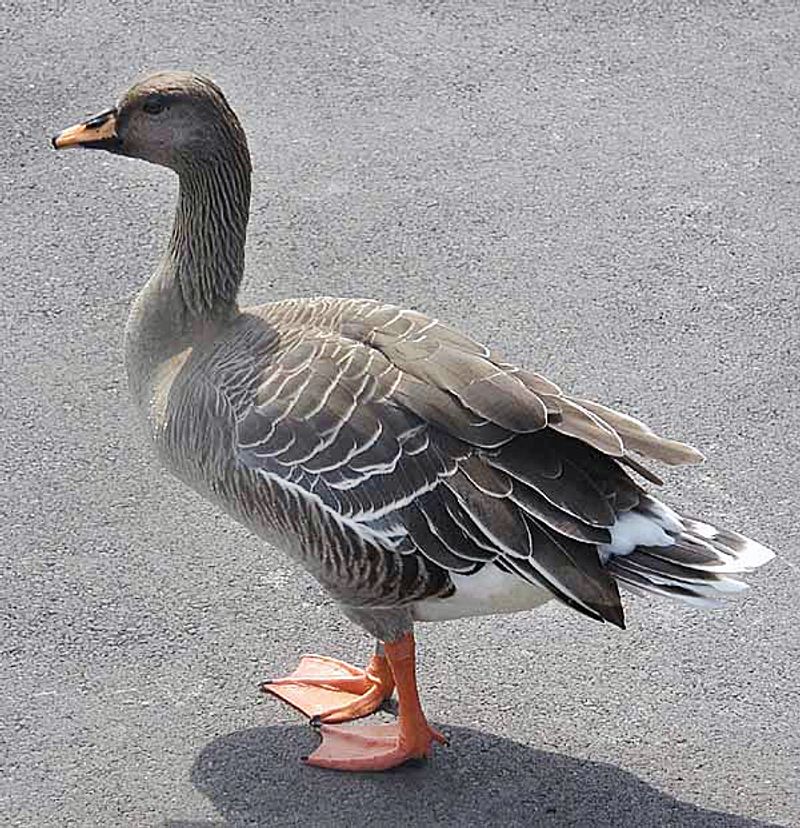
The taiga bean goose is a species of goose that breeds in northern Europe and Asia.
This species is recognized as distinct from the tundra bean goose and is given separate species status by organizations such as the American Ornithological Society and the International Ornithologists’ Union.
However, other ornithological authorities view the two species as one, combining them into a single species. The taiga bean goose is a member of the Anatidae family, which includes ducks, geese, and swans.
This species is one of the most populous geese in the world and can be found in many different habitats. The taiga bean goose has a wide range of behaviors, from migration to nesting and feeding.
This species has a varied diet, consisting of aquatic plants, small invertebrates, and grains. The taiga bean goose is a social species, and can often be seen in large flocks. They are also quite vocal and can be heard calling out during the breeding season.
The taiga bean goose is an important species for its role in the ecosystem and is an important food source for many animals.
| Kingdom | Animalia |
| Phylum | Chordata |
| Class | Aves |
| Order | Anseriformes |
| Family | Anatidae |
| Genus | Anser |
| Species | A. fabalis |
14. Eurasian Wigeon
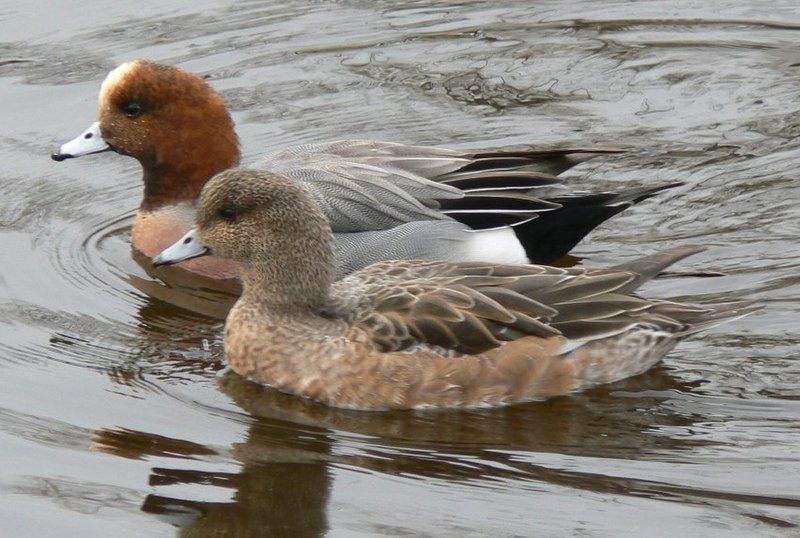
The Eurasian wigeon is a species of dabbling duck from the genus Mareca. It is also known by several other names, such as widgeon and wigeon. It can be found throughout its Palearctic range, which spans from Europe to parts of Asia.
This species is very common and widespread in its range, which makes it a familiar sight to many people. The Eurasian wigeon is a medium-sized bird, with males typically measuring between 17-20 inches in length and weighing between 1.2-2.2 lbs.
They have a distinctive appearance, with a gray-brown head and neck, white cheek patch, and brown chest. The males also have a reddish-brown breast and a white belly.
The females look slightly different, with a brownish head and neck and a light buff-colored breast. This species mainly feeds on plants and seeds, but they will also eat insects and mollusks. They typically forage in shallow waters, such as streams, ponds, and lakes.
During the breeding season, they form large flocks and can often be seen in open fields or grasslands. The Eurasian wigeon is an important species in its range, as it provides food for many predators and plays a role in nutrient cycling.
They are also popular game birds, and their feathers are often used for fly fishing lures. Overall, the Eurasian wigeon is a common and widespread species that plays an important role in its ecosystem.
| Kingdom | Animalia |
| Phylum | Chordata |
| Class | Aves |
| Order | Anseriformes |
| Family | Anatidae |
| Genus | Mareca |
| Species | M. penelope |
15. Crested Ibis
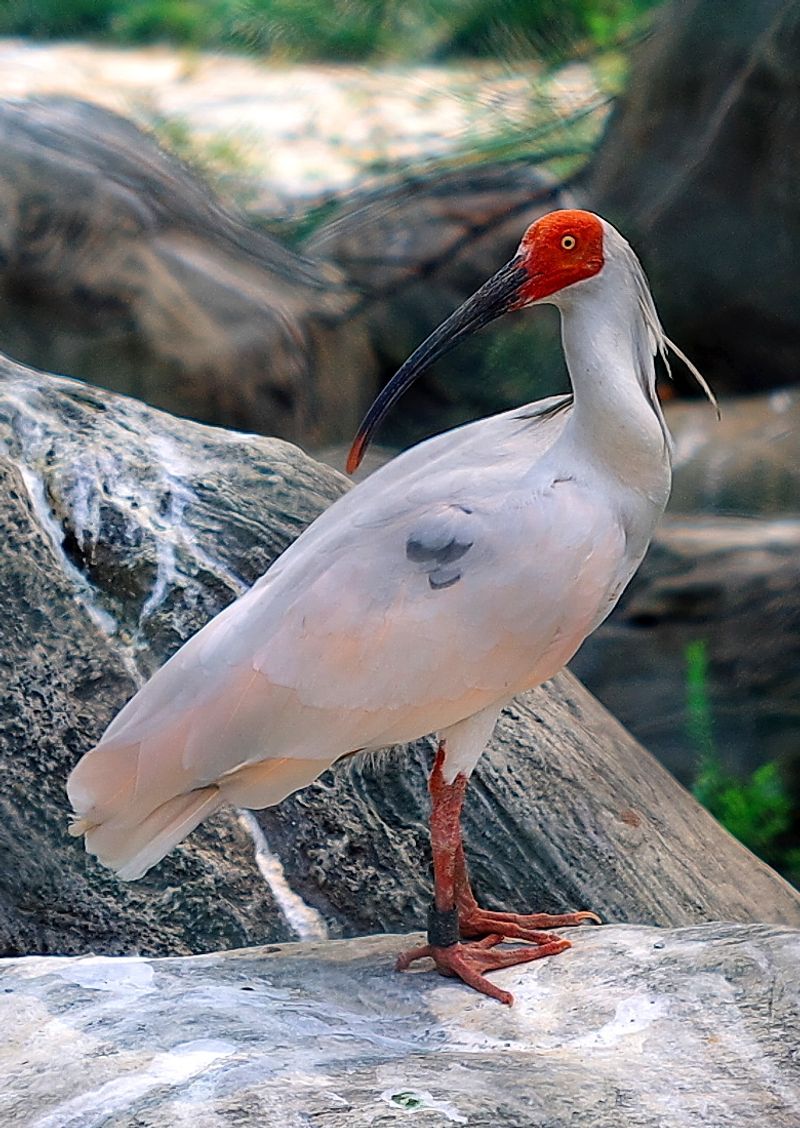
The crested ibis is a majestic bird native to eastern Asia. It is the only member of the genus Nipponia and is known by several names such as the Japanese crested ibis, Asian crested ibis, or toki. It is a large bird with white plumage that is often seen in pine forests.
The crested ibis is easily recognizable due to its partially bare head, which shows off its red skin, as well as its large white plumes on the nape of its neck.
The combination of an almost bald head and the white plume crest is quite striking, making the crested ibis a unique and captivating sight.
| Kingdom | Animalia |
| Phylum | Chordata |
| Class | Aves |
| Order | Pelecaniformes |
| Family | Threskiornithidae |
| Genus | Nipponia |
| Species | N. nippon |
16. Baikal Teal
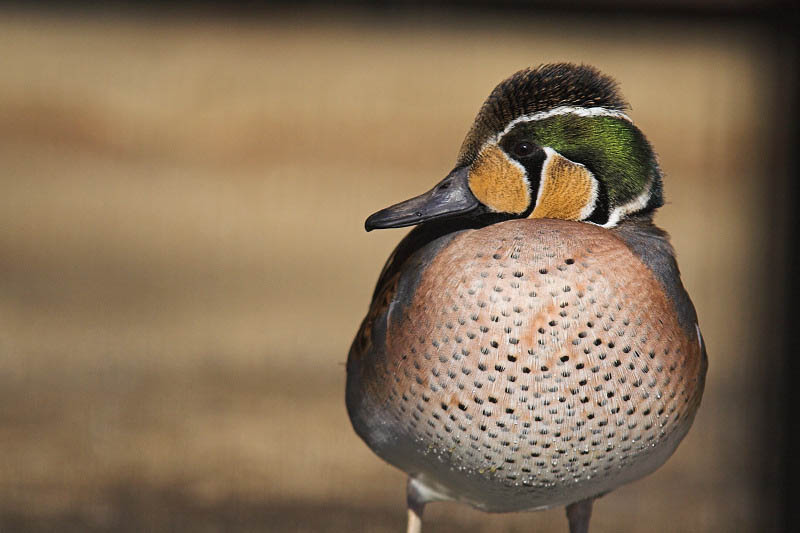
Source: Wikipedia
The Baikal teal is a species of dabbling duck that is native to eastern Russia. It is also known as the bimaculate duck or squawk duck. This species of duck breeds in the same area to which it is native to, eastern Russia, during the warmer months of the year.
During the winter, however, the Baikal teal migrates to East Asia, in order to enjoy the more temperate climate of the area. The Baikal teal is a medium-sized duck, with a wingspan of approximately 46 centimetres. Adults are mainly dark brown in colour, with paler underparts.
Males and females are similar in size and colour, however, the males will have a more distinct white patch on the neck. Juveniles are browner in colour, with white patches on their wings and heads.
The Baikal teal is mainly a freshwater species and prefers shallow and marshy water bodies with plenty of vegetation. They feed mainly on insects, crustaceans, seeds and roots. They will also feed on small fish and molluscs.
Their breeding season starts in April, and will usually last until the start of August. The female will build a nest in a shallow depression, usually close to water, and can lay up to 11 eggs. The male will guard the nest and the eggs, while the female will incubate them.
The young will usually fledge after four weeks. The population of the Baikal teal is currently stable, however, their habitat is threatened by pollution, overgrazing, and hunting.
Conservation efforts are in place to help protect this species of duck and to prevent it from becoming endangered.
| Kingdom | Animalia |
| Phylum | Chordata |
| Class | Aves |
| Order | Anseriformes |
| Family | Anatidae |
| Genus | Sibirionetta |
| Species | S. formosa |
17. Swan Goose
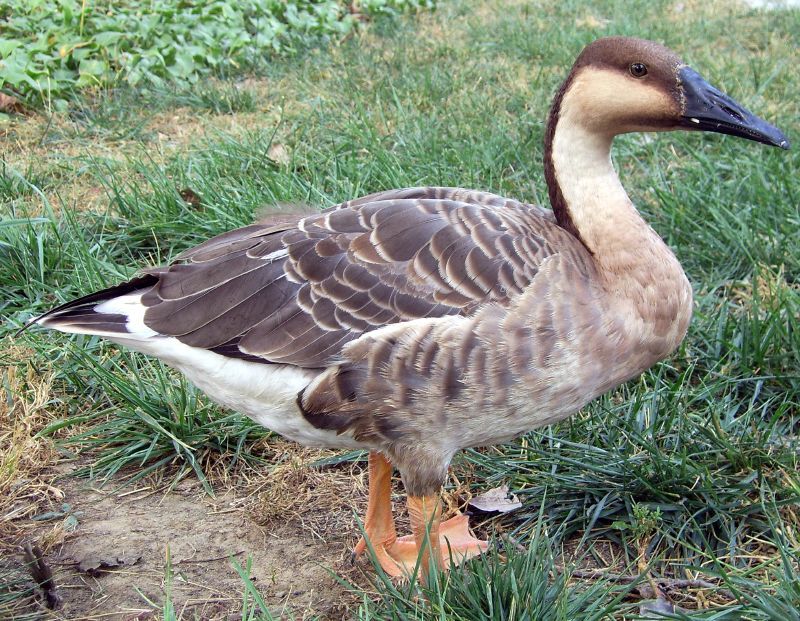
The swan goose is a large bird belonging to the goose family, with striking white plumage. It is native to Inner Mongolia, Northeast China, and the Russian Far East.
During the summer, the swan goose breeds in these areas, while during the winter it migrates southward to central and eastern China.
This species of goose is a migratory one, meaning that it moves from one place to another in response to the changing seasons. The swan goose is a majestic bird, with a wingspan of up to 1.5 meters.
Its bright white feathers are striking against the sky, and its long neck and large wings make it a beautiful sight to behold. Its diet consists mainly of grasses and aquatic plants, as well as the occasional small fish, insects, and amphibians.
It is a fairly social bird, often gathering in large flocks during migration. The swan goose is an important species, both culturally and ecologically. In Chinese culture, it is seen as a symbol of peace, grace, and beauty.
Ecologically, it plays an important role in the wetland habitats of its breeding range, providing food for predators and helping to disperse nutrients throughout the environment. Overall, the swan goose is a remarkable species, both aesthetically and ecologically.
Its beauty is impressive, and its ecological role is invaluable. It is a species worth preserving, and one that should be respected and appreciated.
| Kingdom | Animalia |
| Phylum | Chordata |
| Class | Aves |
| Order | Anseriformes |
| Family | Anatidae |
| Genus | Anser |
| Species | A. cygnoides |
18. Greylag Goose
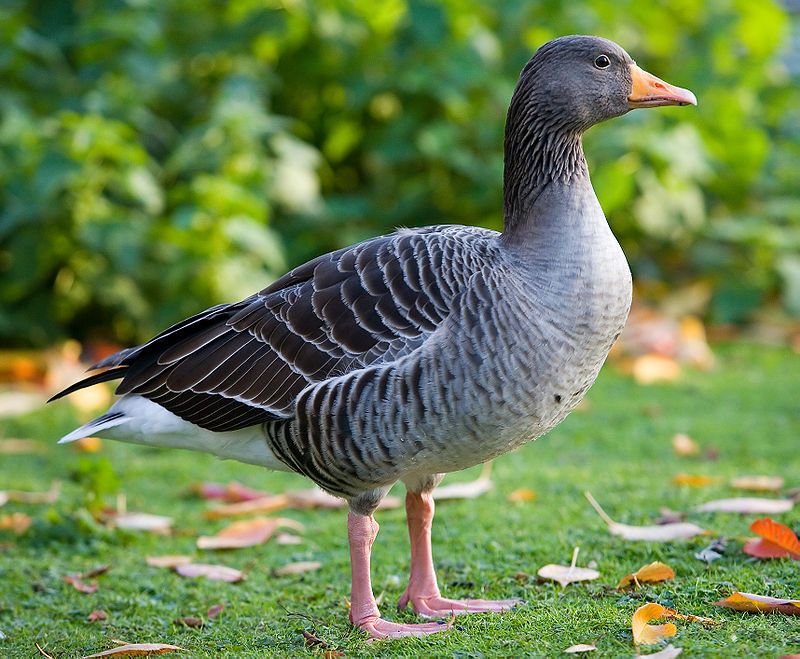
The greylag goose, also known as the graylag goose, is a large waterfowl from the Anatidae family. It is the type species of the genus Anser and is characterized by its mottled, barred grey and white plumage, and its bright orange beak and pink legs.
The goose is usually found in temperate regions of Europe, Asia, and North America, and is a frequent visitor to wetlands and other bodies of water. It is an omnivorous species, with a diet of plants, insects, mollusks, and small fish.
Greylag geese typically form large flocks and are known for their high-pitched honks while in flight. They are highly social creatures and are often seen in large family units.
The greylag goose is also a popular game bird, and its populations are usually well-managed by hunting regulations.
| Kingdom | Animalia |
| Phylum | Chordata |
| Class | Aves |
| Order | Anseriformes |
| Family | Anatidae |
| Genus | Anser |
| Species | A. anser |
19. Northern Goshawk
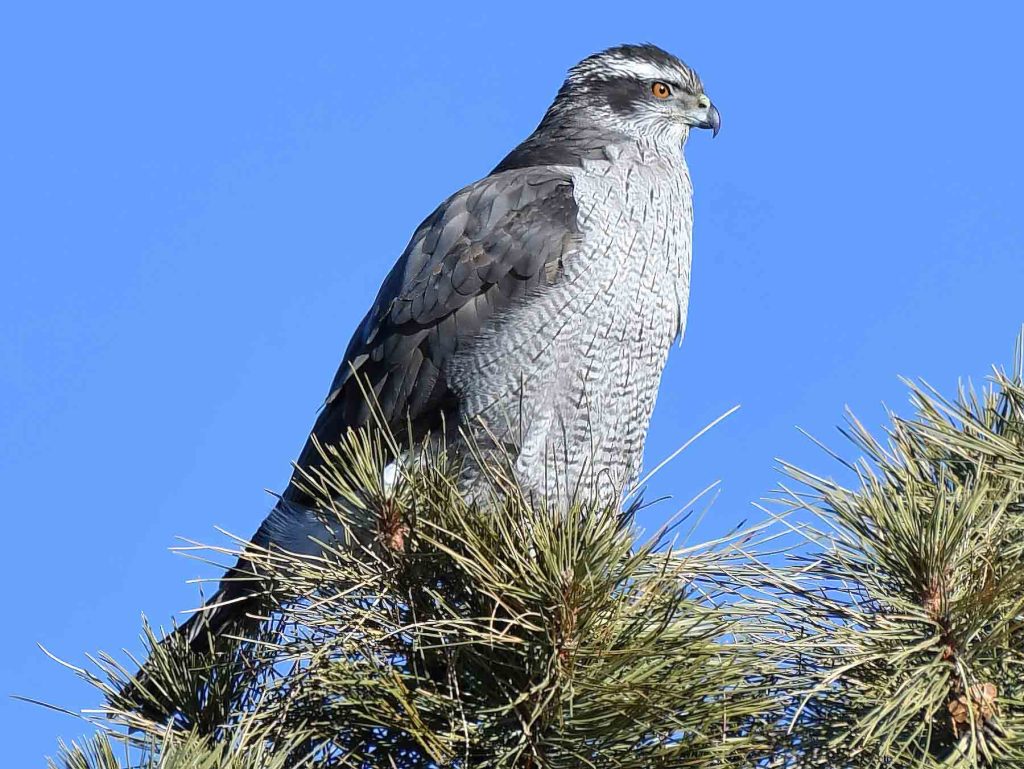
Source: ebird.org
The Eurasian goshawk is a type of bird of prey belonging to the Accipitridae family. This family comprises diurnal raptors, such as eagles, buzzards and harriers. The goshawk is part of the genus Accipiter, which is commonly referred to as a “true hawk”.
This species of hawk is medium-large in size and can be found in various parts of the world. They are known for their sharp eyesight and swift flying capabilities, making them an effective predator. The Eurasian goshawk is a powerful hunter and is able to take down large prey.
They have adapted to live in a range of habitats and hunt a variety of prey, including small mammals, birds, and reptiles. Despite their predatory nature, the Eurasian goshawk is an important species in the food chain, helping to keep populations of its prey in check.
| Kingdom | Animalia |
| Phylum | Chordata |
| Class | Aves |
| Order | Accipitriformes |
| Family | Accipitridae |
| Genus | Accipiter |
| Species | A. gentilis |
20. Cackling Goose
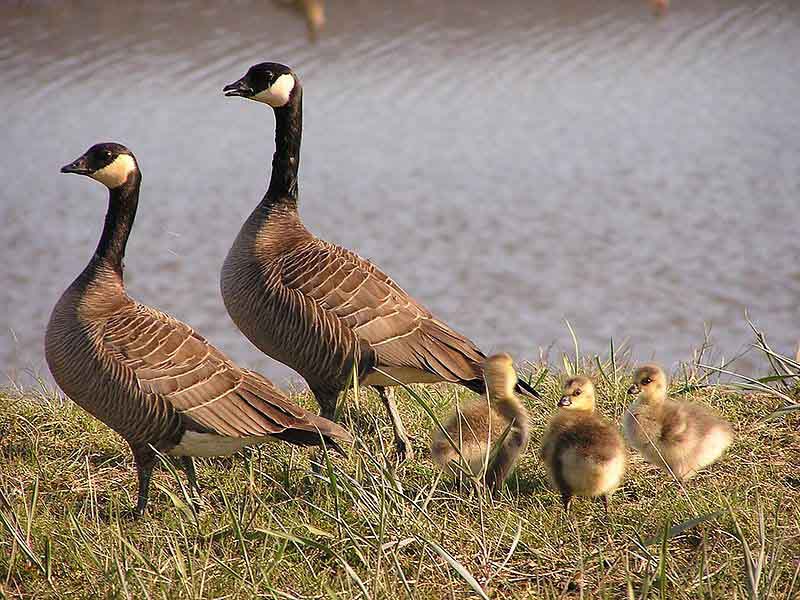
Source: Wikipedia
The cackling goose is a species of goose that is native to both North America and East Asia. It is identified by its distinctive honking call, which is similar to that of a Canada goose.
It has a dark brown body with a white neck and head, and its legs and feet are pinkish-colored. The cackling goose is smaller in size than the Canada goose and can be seen in open fields, wetlands, and sometimes in urban areas.
Its diet consists of grasses, grains, and other aquatic plants. It is known to migrate in the winter months to areas with more food availability.
Additionally, the cackling goose is considered to be an important species of waterfowl, due to its role in maintaining wetland habitats.
| Kingdom | Animalia |
| Phylum | Chordata |
| Class | Aves |
| Order | Anseriformes |
| Family | Anatidae |
| Genus | Branta |
| Species | B. hutchinsii |
21. Blue-and-White Flycatcher
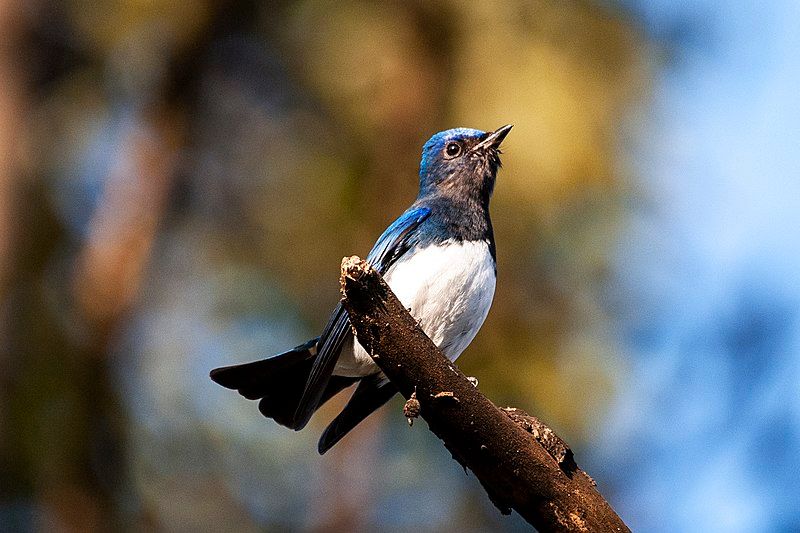
The blue-and-white flycatcher is a species of migratory songbird that is found in the Old World flycatcher family Muscicapidae. It is also known as the Japanese flycatcher.
This species can be found breeding in Japan, Korea, and certain regions of northeastern China and the Russian Far East. The blue-and-white flycatcher is an attractive species with its blue upperparts and white underparts.
It is usually found in forest habitats such as coniferous and deciduous forests. They feed mainly on insects but can also feed on berries and other fruits. Migration is an important part of the blue-and-white flycatcher’s life cycle.
During the spring, they migrate from their wintering grounds in Southeast Asia to their breeding grounds in Japan, Korea, and parts of China and Russia. During the autumn they will migrate back from their breeding grounds to their wintering grounds.
The blue-and-white flycatcher is an important species for its migratory behavior and its role in the food web. It is important to maintain healthy forest habitats in order to ensure that this species can continue to thrive.
| Kingdom | Animalia |
| Phylum | Chordata |
| Class | Aves |
| Order | Passeriformes |
| Family | Muscicapidae |
| Genus | Cyanoptila |
| Species | C. cyanomelana |
22. Baer’s Pochard
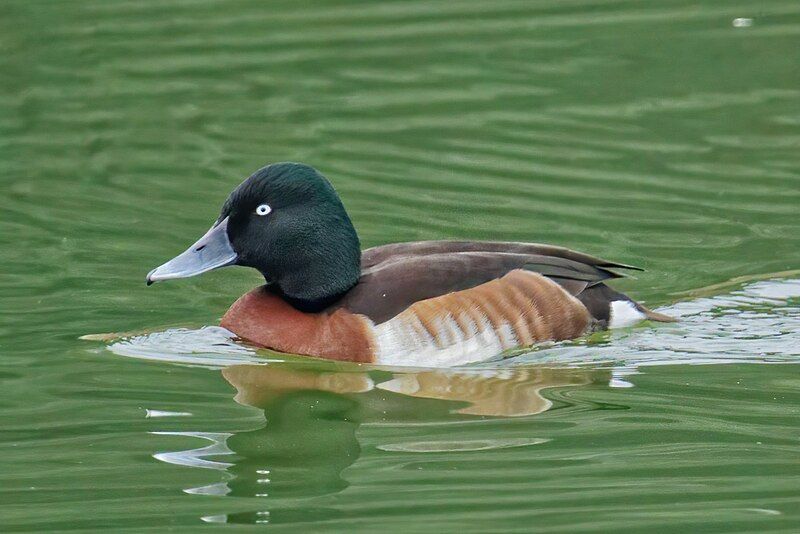
Baer’s pochard is a species of diving duck that is found in eastern Asia. It is a permanent resident in the regions of North and Central China, but it used to breed in the southeast of Russia and Northeast China.
During the winter, the Baer’s pochard migrates to the south of China, Vietnam, Japan, and India. It is a monotypic species, which means that it does not have any other species that it is closely related.
The holotype, which is a specimen that is used for the scientific description and naming of a species, was collected from the middle Amur region.
| Kingdom | Animalia |
| Phylum | Chordata |
| Class | Aves |
| Order | Anseriformes |
| Family | Anatidae |
| Genus | Aythya |
| Species | A. baeri |
23. White-Tailed Eagle
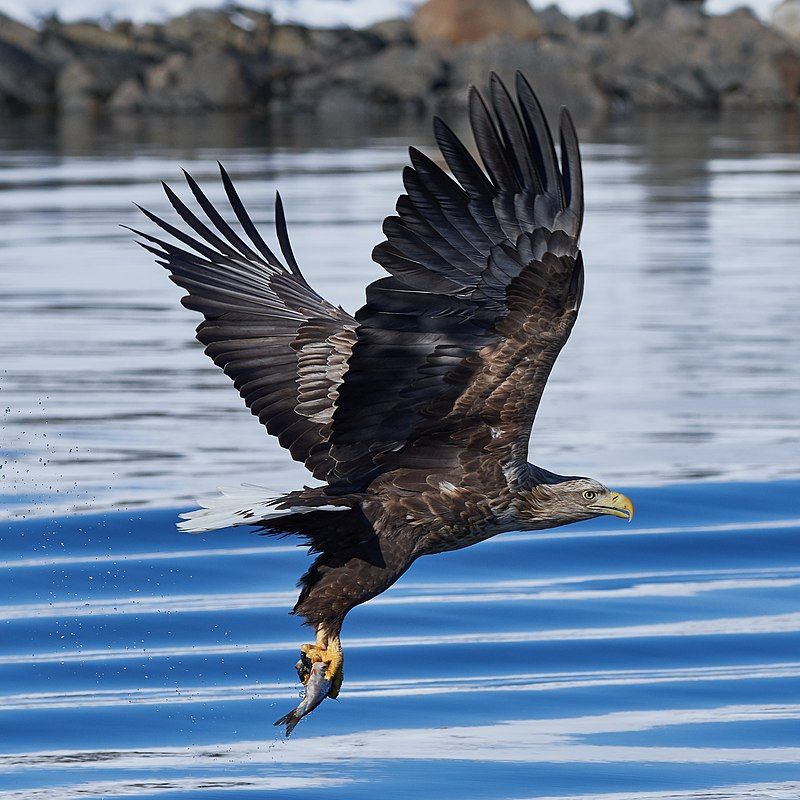
The white-tailed eagle, also known as the ‘sea eagle’, is a large bird of prey that is found in temperate Eurasia. It is a member of the Accipitridae family, which includes many other diurnal raptors such as hawks, kites, and harriers.
This species of eagle is considered to be one of the largest birds of prey in the world, having a wingspan of up to 6.5 feet. It has a white tail and a large, hooked beak that it uses to feed on small mammals, fish, and other small animals.
The white-tailed eagle is an impressive hunter, capable of reaching speeds of up to 80 miles per hour in pursuit of its prey. It is also an impressive sight in the skies, with its white tail and large wingspan allowing it to soar majestically over the landscape.
The white-tailed eagle is a powerful symbol of nature’s beauty and strength, and its presence in temperate Eurasia is a reminder of the importance of preserving and protecting this species.
| Kingdom | Animalia |
| Phylum | Chordata |
| Class | Aves |
| Order | Accipitriformes |
| Family | Accipitridae |
| Genus | Haliaeetus |
| Species | H. albicilla |
24. Lesser Scaup
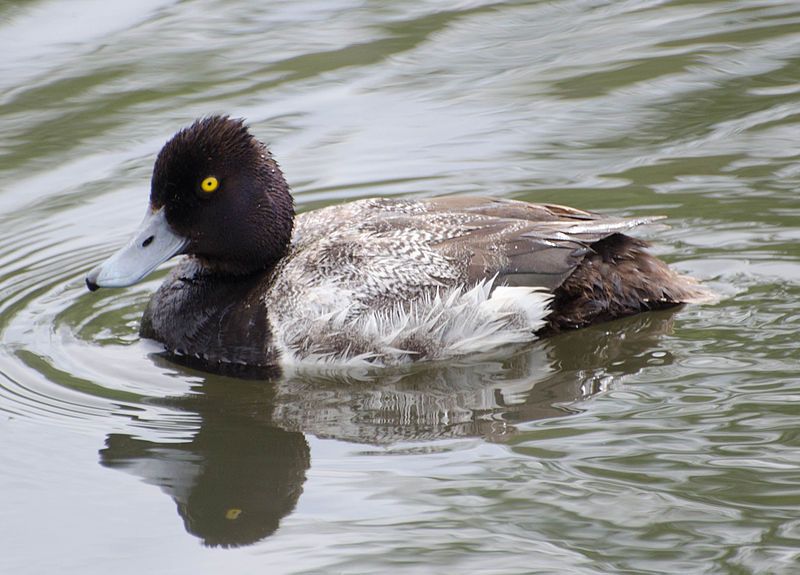
The lesser scaup is a small species of North American diving duck that migrates southward to Central America during the winter season. This duck is known by two common names, the little bluebill and broadbill, both of which refer to its distinctive blue bill.
The lesser scaup is a dabbling duck, meaning it feeds on the surface or near the surface of the water, and the male scaup displays a unique combination of colors, with a black head, white neck, grayish-brown body, and a blue bill.
The female scaup is typically duller in color, with a brown head and body, though its bill is still blue. The lesser scaup is a social species, often found in large flocks in its native habitats.
This small duck is an important part of North American wetlands, as its presence contributes to the health of the food chain. The lesser scaup is also a popular game bird due to its abundance and willingness to be taken.
| Kingdom | Animalia |
| Phylum | Chordata |
| Class | Aves |
| Order | Anseriformes |
| Family | Anatidae |
| Genus | Aythya |
| Species | A. affinis |
Conclusion
Niigata is a great place to observe birds. With its diverse habitats and rich birdlife, birdwatchers of all levels can enjoy the beauty of Niigata’s avian population.
From the majestic cranes of the wetlands to the colorful songbirds of the forests, Niigata’s birds provide an exciting and rewarding experience for birdwatchers and nature lovers alike.